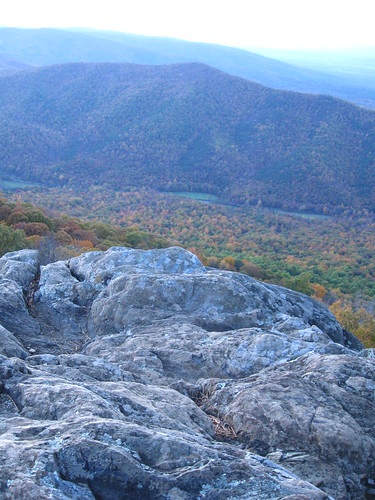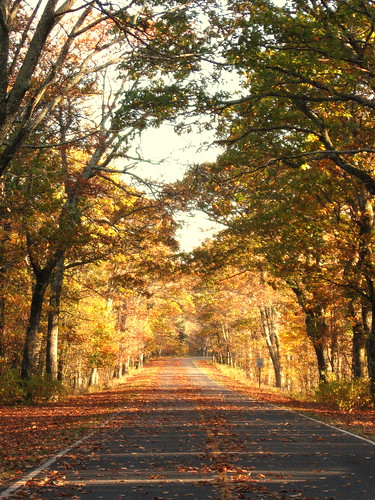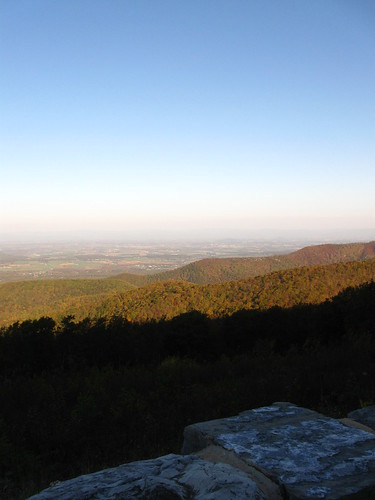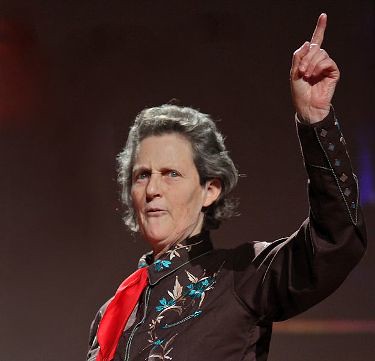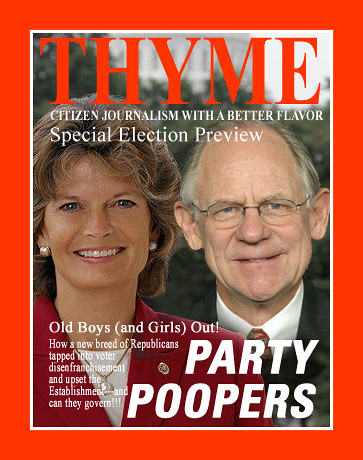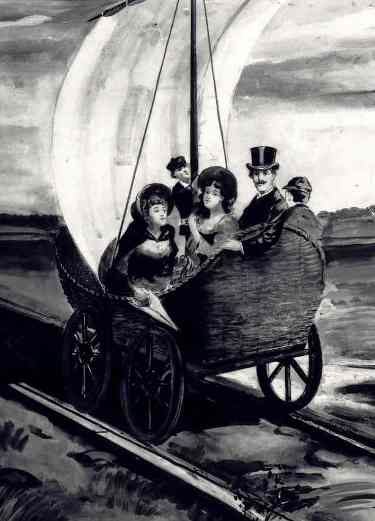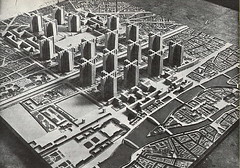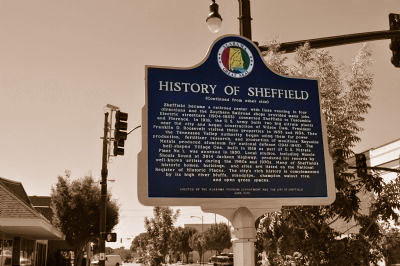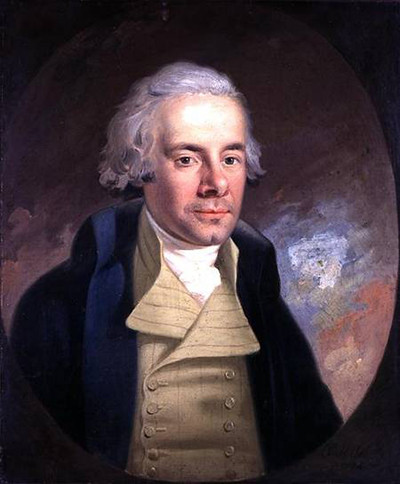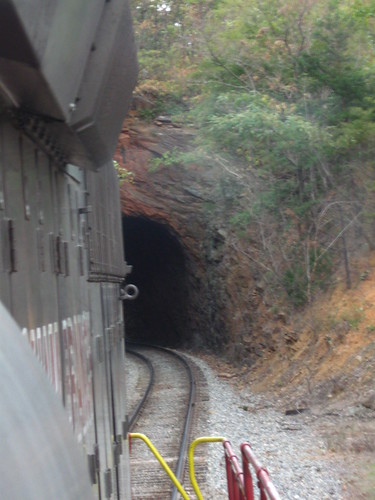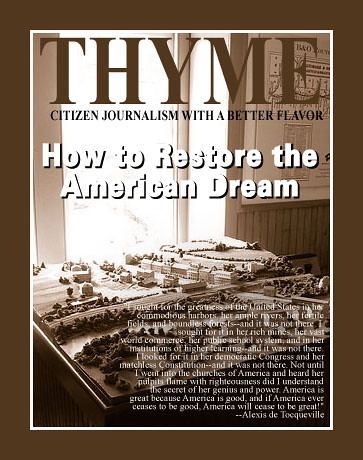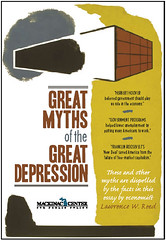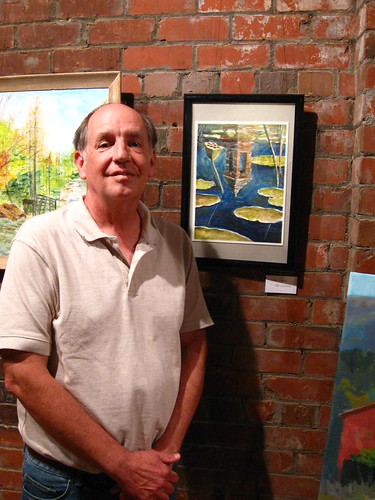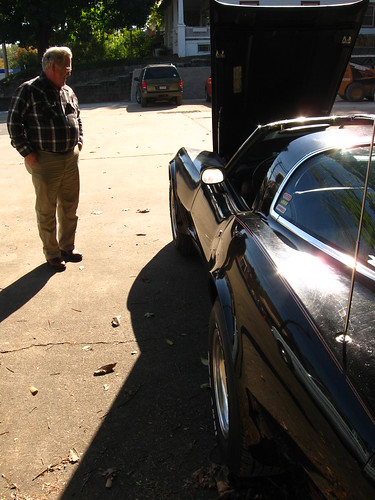Buckingham Branch Railroad Follows Historic Path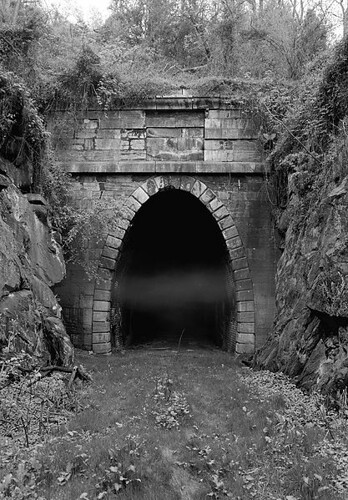 Claudius Crozet's Original Blue Ridge Tunnel. Library of Congress Image.
Claudius Crozet's Original Blue Ridge Tunnel. Library of Congress Image.The
Virginia Central Railroad was a major feat of engineering in its day as
Claudius Crozet built a series of four tunnels under the Blue Ridge Mountains in 1856. Today the crews that operate the
Buckingham Branch Railroad carry on the tradition.
We're riding on
BB6, a GP40 diesel-electric locomotive, out of The Flats. Our crew, Don and Zane, are making the run across the mountain to Charlottesville. A number of businesses along the track depend on the railroad for bulk shipments.
We roll through Staunton and make our way to Transit Mix Concrete to deliver a car. Although much of a railroad's operation is computerized, the process of making up trains and taking them apart is still a mixture of chess game, choreography and hard work on the part of the train crew.
Switches must be unlocked and thrown, hand brakes set and unset and safety measures attended to. It looks like fun on a balmy october day as Zane moves about performing these tasks, but you have to imagine what it is like when he's doing the same job in last Winter's big snow or driving rain. A railroad man's job was tough in the Nineteenth Century and this part of it hasn't changed.
It takes a bit of leverage to throw a switch on a good day, so think of what it must be like when snow is piling up around you. We back into the first siding. It has tight curves that make for slow going. We've left most of our cars on the main line and are pushing the cement car into place. Then we need to return and couple up those we've left. We pull forward and back the entire train onto the Transit Mix siding to clear the track for a Westbound CSX train. The switch must be opened for the main line and locked before the track is considered clear.
Then you wait. Safe operation depends on constant communication and a permitting system to ensure that no Eastbound train tries to share a track with a Westbound. There are work trains to be accounted for too. A long line of empty coal cars passes. When the track is cleared we begin again. Our next stop is Augusta Coop. We will be bringing them another car from Charlottesville, so we drop one car for them on their siding. We'll put it in the fertilizer pit area later when we return.
Now we make our way out to Fishersville. We roll through Waynesboro and Basic City. We start climbing the mountain and enter the almost mile-long Blue Ridge Tunnel. This is a parallel tunnel to Crozet's original Blue Ridge Tunnel that was built in 1942 for larger wartime rail cars. We emerge at Afton and head down seven miles of descending grade that will take us to the town of Crozet.
The train moves through a series of tight curves where the track follows the original route, You can imagine what it must have been like to cut that grade through the stone by hand. We move through this section under 25 miles per hour. The Rock tunnel is next. Here is an uncased tunnel that was built by Crozet. It looks about the same as it did in the Nineteenth Century.
We pass through open cuts where the Greenwood tunnel and another tunnel have been bypassed. Then its on through Crozet. We pass the now defunct Westvaco wood lot in Ivy.
"This would be a great place for a business," Don says.
"Good luck on that, this is Albemarle County," I reply. When I lived in Crozet, some of my neighbors worked for Westvaco. There were the Morton's Frozen Foods plant and Acme Visible Records plant in the town itself. Both are shuttered now as well.
We enter Charlottesville where the train must crawl through town at 10 miles per hour and cannot blow her horn at grade crossings. I muse to Don about UVA students who cross streets [and railroad tracks] without looking:
"What do you do about them," I ask.
"You have to be ready to stop" is his answer. You are allowed to sound the horn in an emergency.
We switch cars in the Charlottesville yard by the fading evening light. There is a little preschool by the entrance to the yards and it gives me great pleasure to sit in a locomotive cab and wave to the kids. The teachers hold up some of the little guys to get a better look. I wave some more as we pass the school several times. I remember in my youth the Maryland and Pennsylvania Railroad had a track near our house. I liked to watch that train.
It is dark as we crawl back out of Charlottesville. Don spots a grey fox sitting on the track near the University of Virginia. He runs off and we spot a hole near the track. Later I spot an owl flying overhead as we run through Albemarle County. Deer are everywhere.
We return to Brand, just East of Staunton, where we shuffle around the other car we've picked up for Augusta Coop and push it into their siding. It's around 9:30pm when we return to the flats. There is paperwork to do for the crew. I pick up Don's bag of required operating manuals -- it is heavy. I'm grateful to have seen a part of the culture that built this country and to have shared it with the men who still live it.
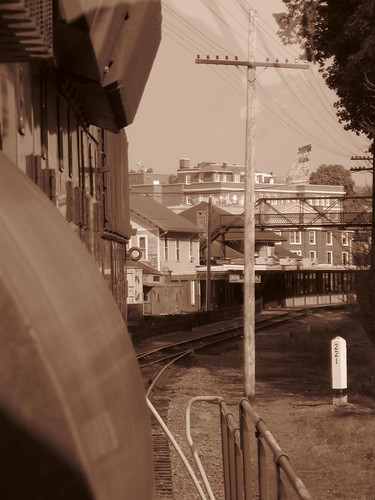 BB6 Leaves the flats and heads through Staunton.
BB6 Leaves the flats and heads through Staunton.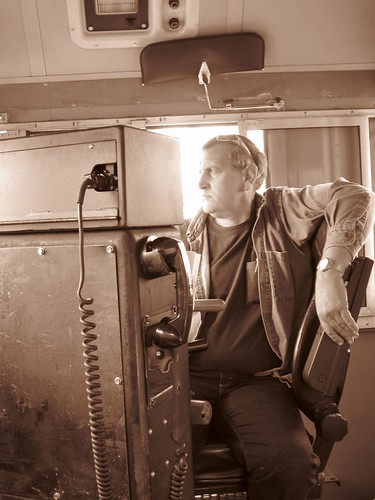 Don driving BB6.
Don driving BB6.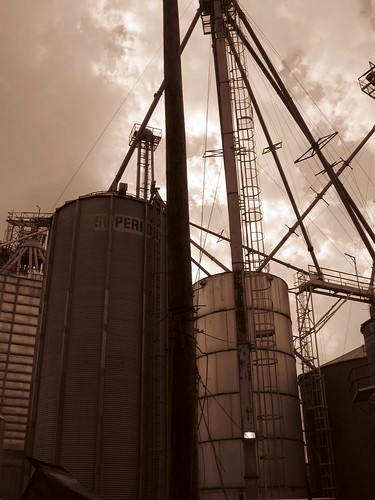 Augusta Coop.
Augusta Coop.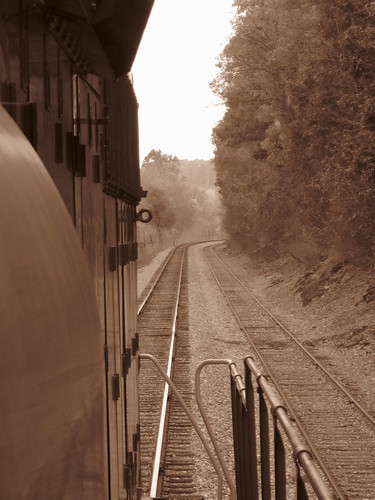 Rolling through Brand, heading East.
Rolling through Brand, heading East.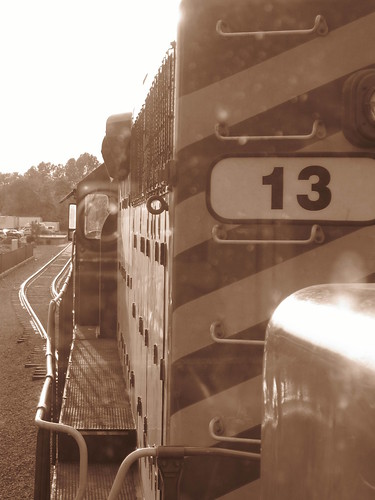 BB13.
BB13.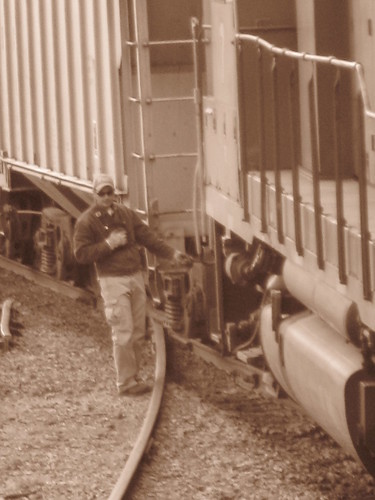 In the Charlottesville Yard.
In the Charlottesville Yard.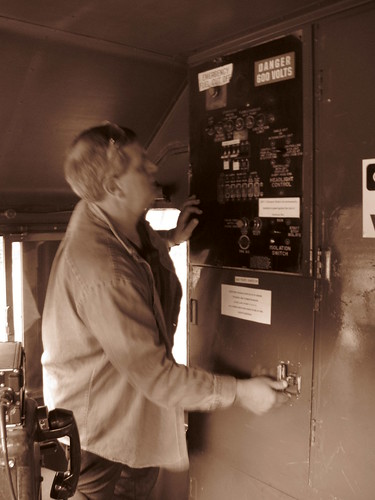 Powering up BB7 for the return trip.
Powering up BB7 for the return trip. Inside the Blue Ridge Tunnel.
Inside the Blue Ridge Tunnel.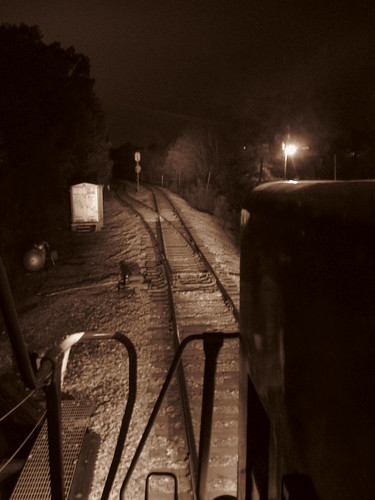 Back at Brand.More Photos [click to view]
Back at Brand.More Photos [click to view].



